“Much of my weekend spare time was spend roaming around every neighborhood in Manhattan searching for interesting picture material. It was like a hiking tour of the world. I miss it.”
– Arthur W. Grumbine
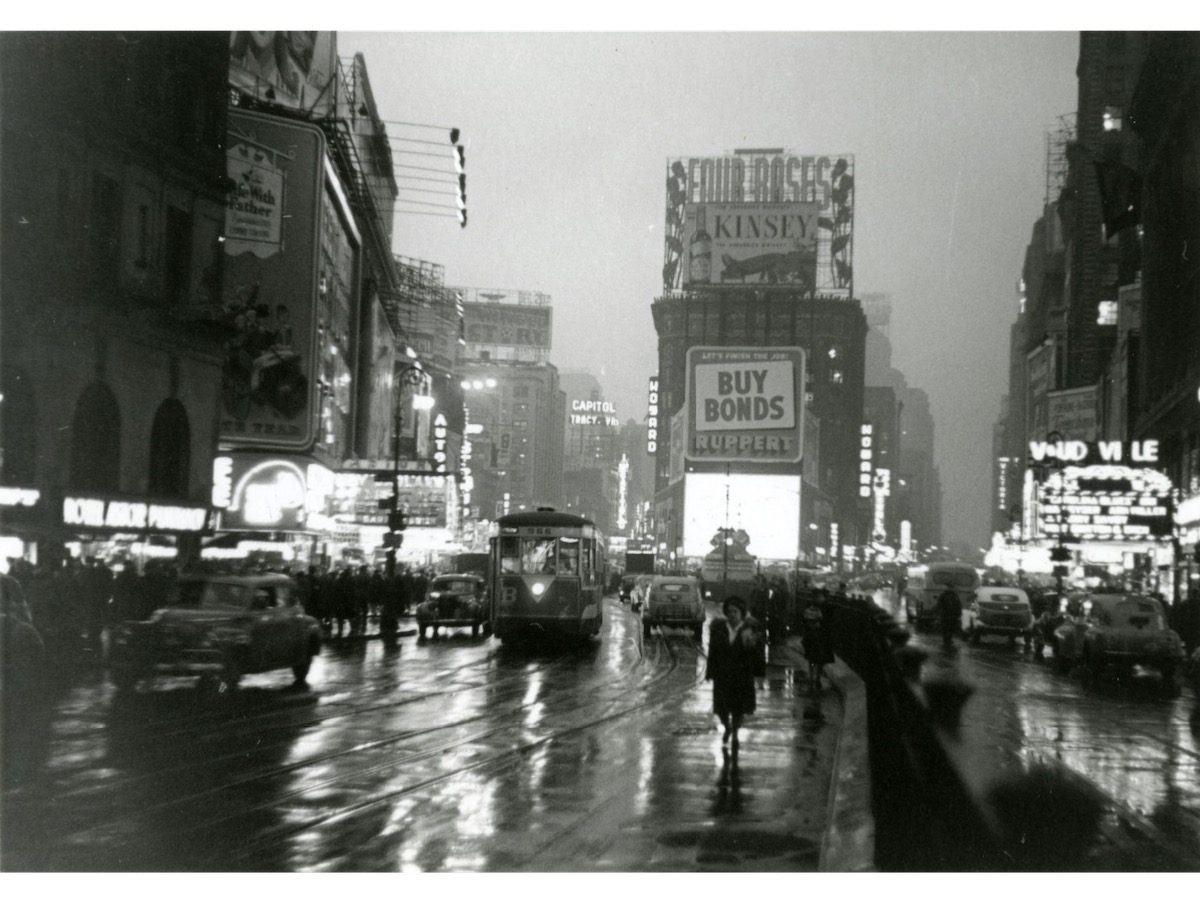
Times Square at dusk in the rain at the intersection of Broadway and Seventh Avenue at 46th Street.
Arthur W. Grumbine (1901 – 1998) worked a as telegraph operator with the Philadelphia and Reading Railroad and then Western Union through 1943. He wrote about his life in The Era of Morse Telegraphy, which appeared as a three-part series of articles in Dots and Dashes, the official publication of the Morse Telegraph Club, in 1985. You might enjoy this:
The public didn’t always realize the limitations of telegraphy. They likened it to the work of a magician. For example, a husky ruddy-complected fellow opened a package at the counter and pulled out a red hunting coat. “I bought this coat by mail order from a company in California and the damn thing is too small. I’m going on a hunting trip next week. I want to get it exchanged by telegraph for a larger size. Mail won’t get back in time.” He definitely knew it could be done because a friend of his got flowers by telegraph, and they were larger than his coat.
Upon wiring seven dollars, a well dressed gentleman in all sincerity remarked, “You know, how that money gets through those thin wires has always been the eighth wonder in the world to me”
….
Back in the days of prohibition it was quite common for bootleggers to enter the office late in the evening and pile three to five thousand dollars, mostly in small bills, on the counter to be telegraphed. This had to be counted in full view from the street. There never was any mistake in the amounts handed to me, nor were there any holdups.
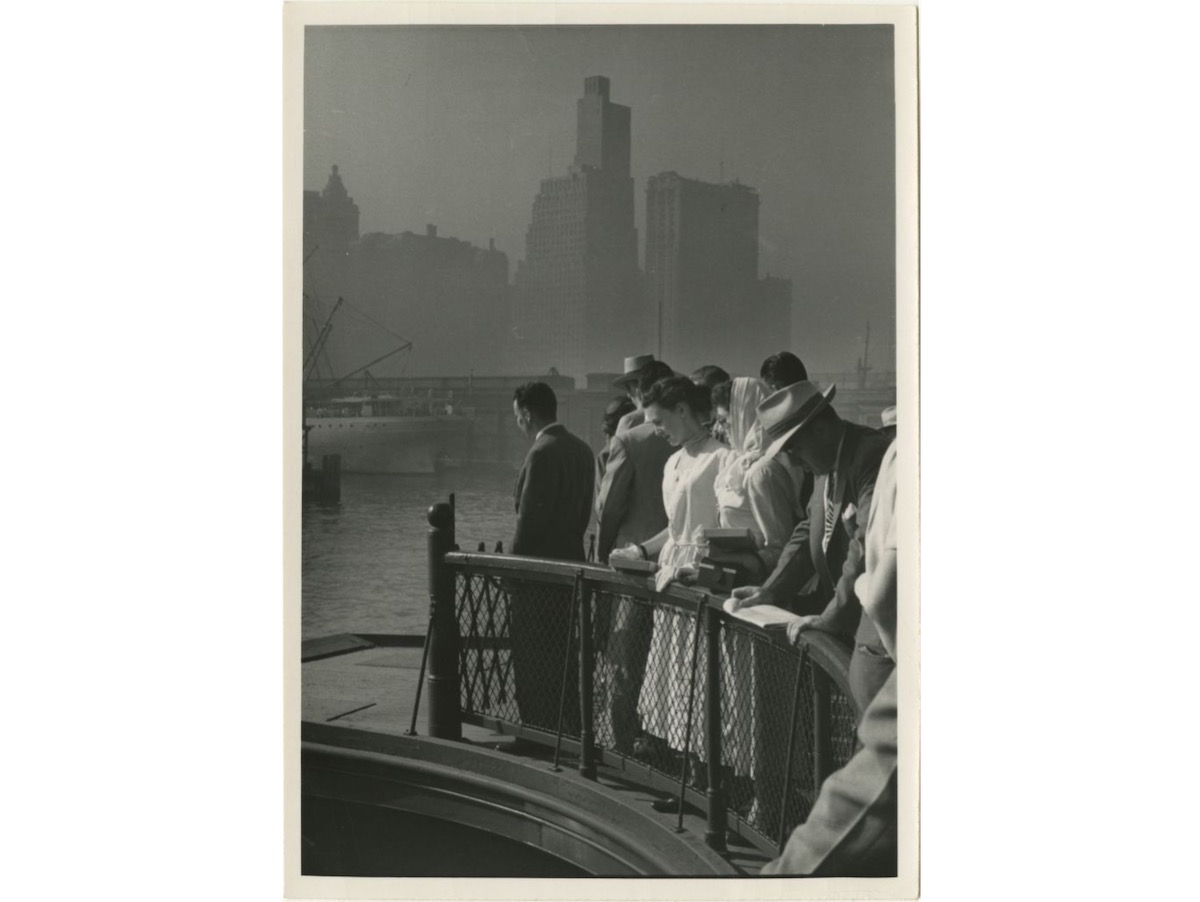
Passengers on the upper deck of a Central Railroad of New Jersey ferry in Jersey City going to Liberty Street in Manhattan 1950
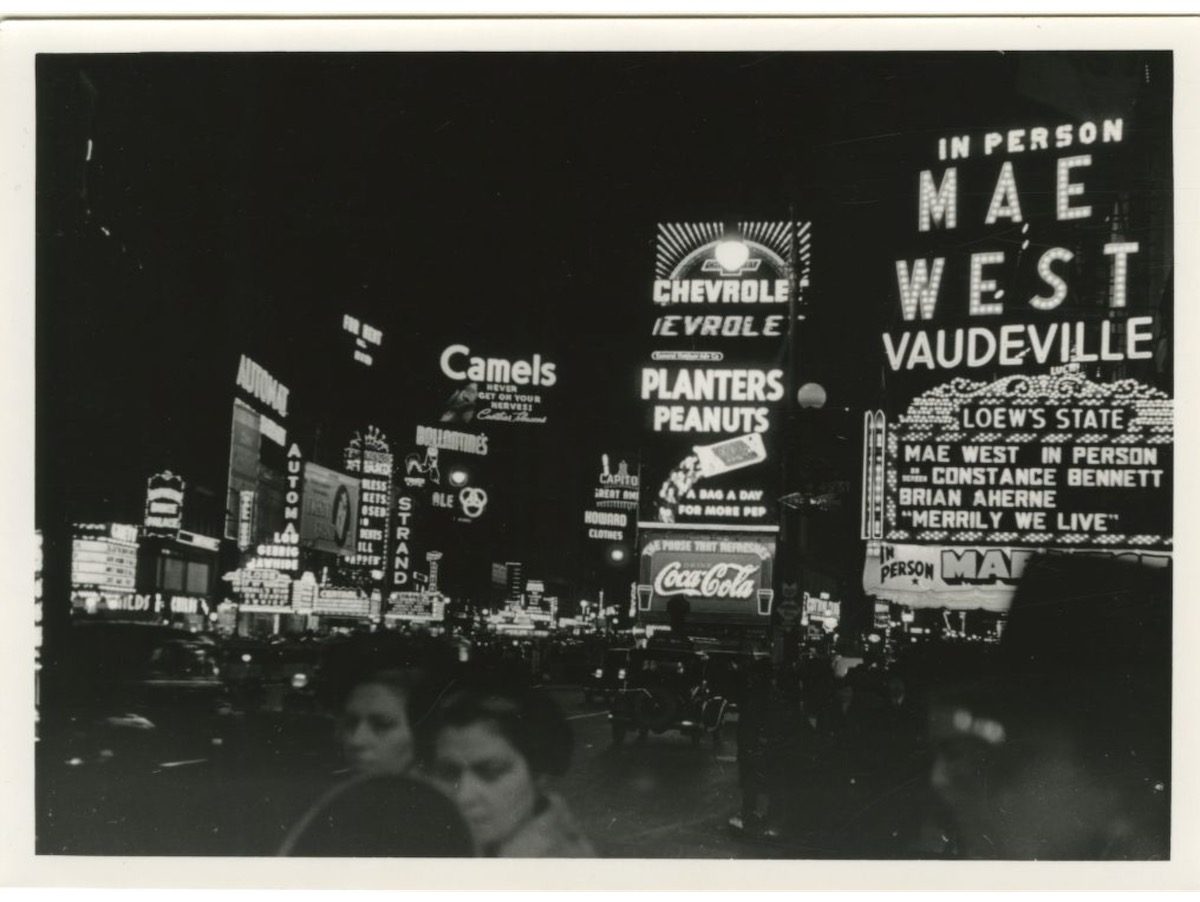
Grumbine understood the technology. He had built his first camera from a discarded cigar box at age 12, and bought his first commercial camera, a folding Kodak, as soon as he found full-time employment. And he always did all of his own developing and printing. In his 30s, Grumbine began to enter his photographs to national and international juried exhibitions, winning more than two dozen awards and prizes.
Grumbine began working in photography professionally after a friend working in research at the Photo Products Department of Dupont suggested he apply for a position there. At age 42 he accepted an entry-level assignment in one of the company’s research laboratories; twenty-three years and four promotions later, Grumbine retired from Dupont with five United States and twenty international patents to his name. His work was primarily centered in commercially produced film for the pre-computerized printing industry, particularly with the development and refinement of Dupont’s Rotofilm and Screen Process Film.
Arthur Grumbine donated his photographs to The New-York Historical Society.
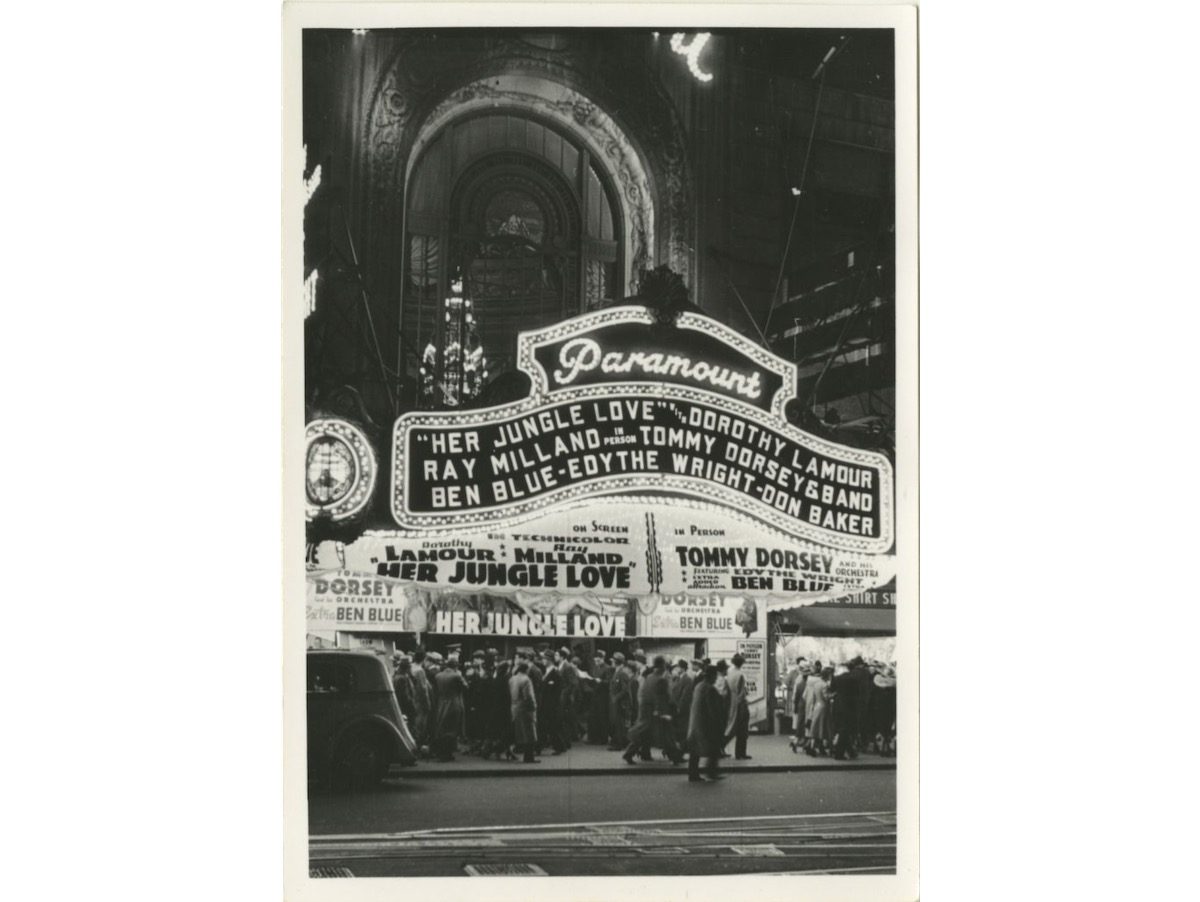
Entrance of Paramount Theatre at night in Times Square.

Billboard advertisement with WINTER GARDEN sign in lights in Times Square.

1948 NYC – SLOPPY LOUIE’S restaurant on 92 South Street near Fulton Fish Market in Lower Manhattan.
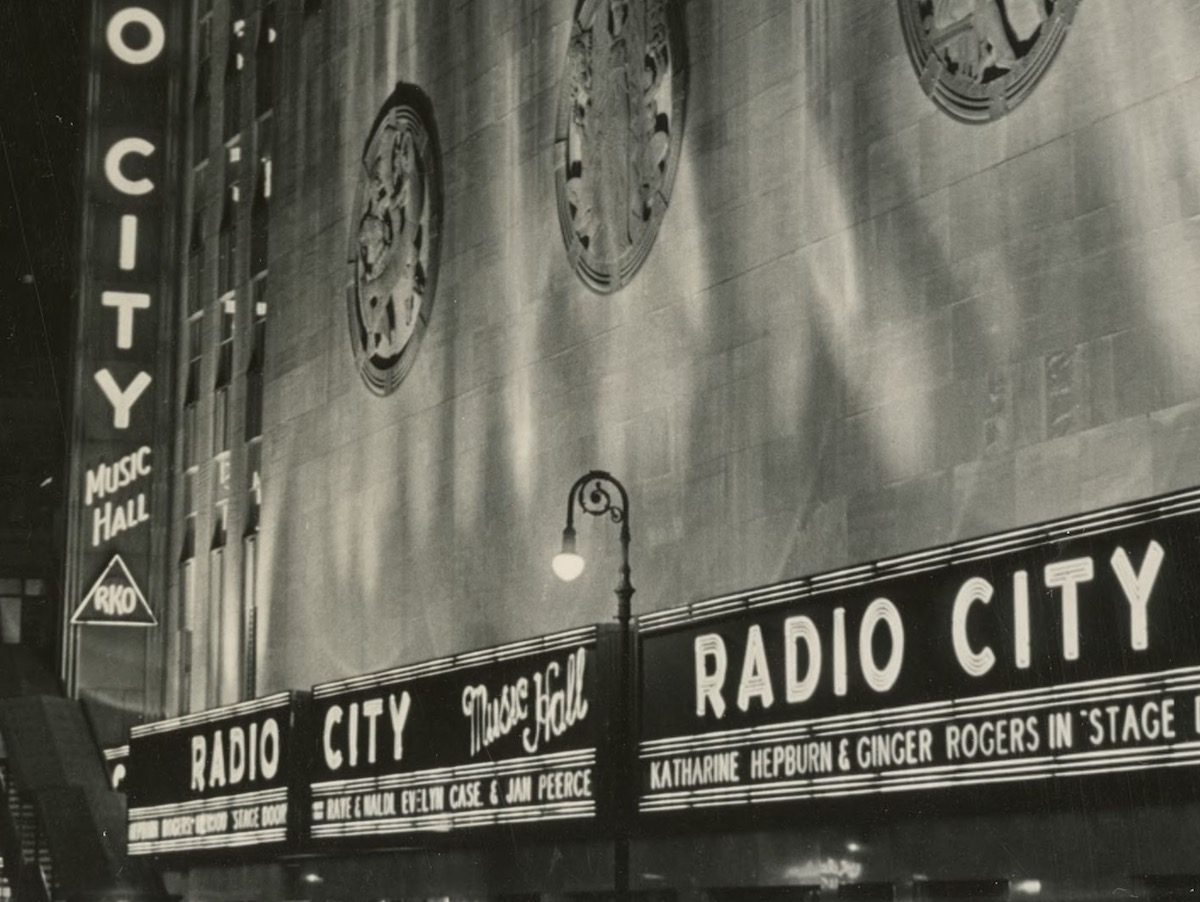
Radio City Music Hall at night. 6th Avenue El station at left. (about 1939)

Pedestrians cross the street in the rain towards Saks – 34th store on West 34th Street in Midtown Manhattan.

Replica of Statue of Liberty on top of Liberty Storage Company building near Lincoln Center. About 1950.
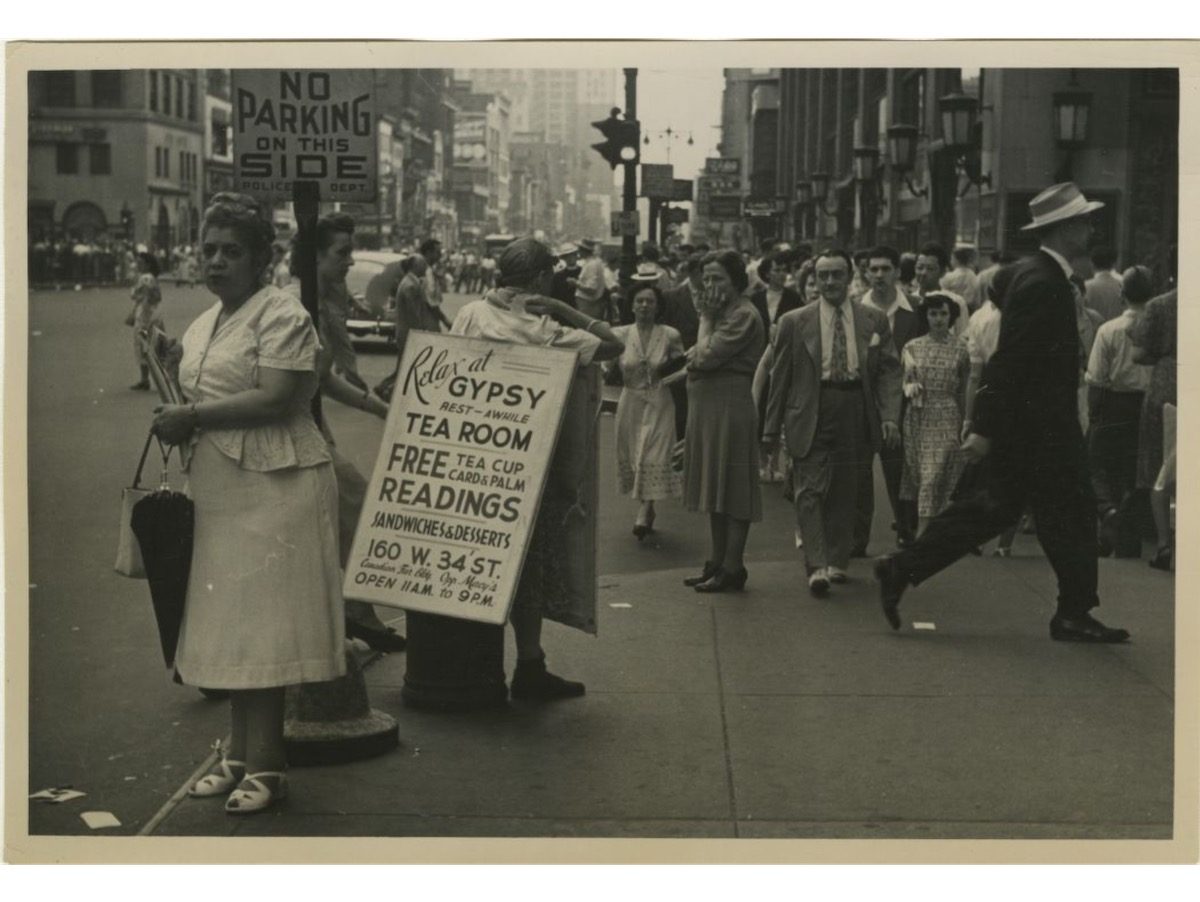
A man wears a sandwich board sign for Gypsy Tea Room on a busy street in Midtown Manhattan.1950
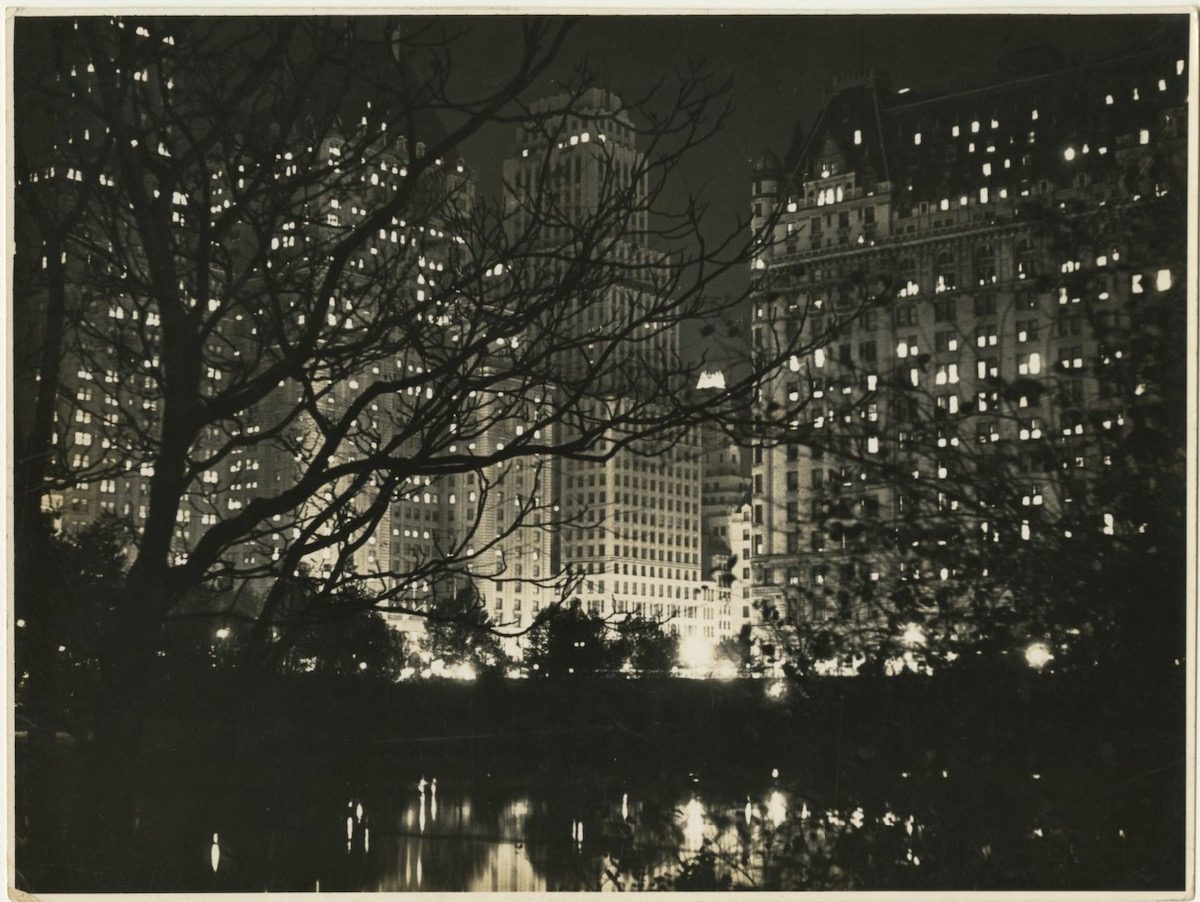
Central Park South at night on Fifth Avenue and 59th Street.

Small stone sculpture inscribed with the words DOG BAR on the ground at Wallachs clothing store on Fifth Avenue and 44th Street.
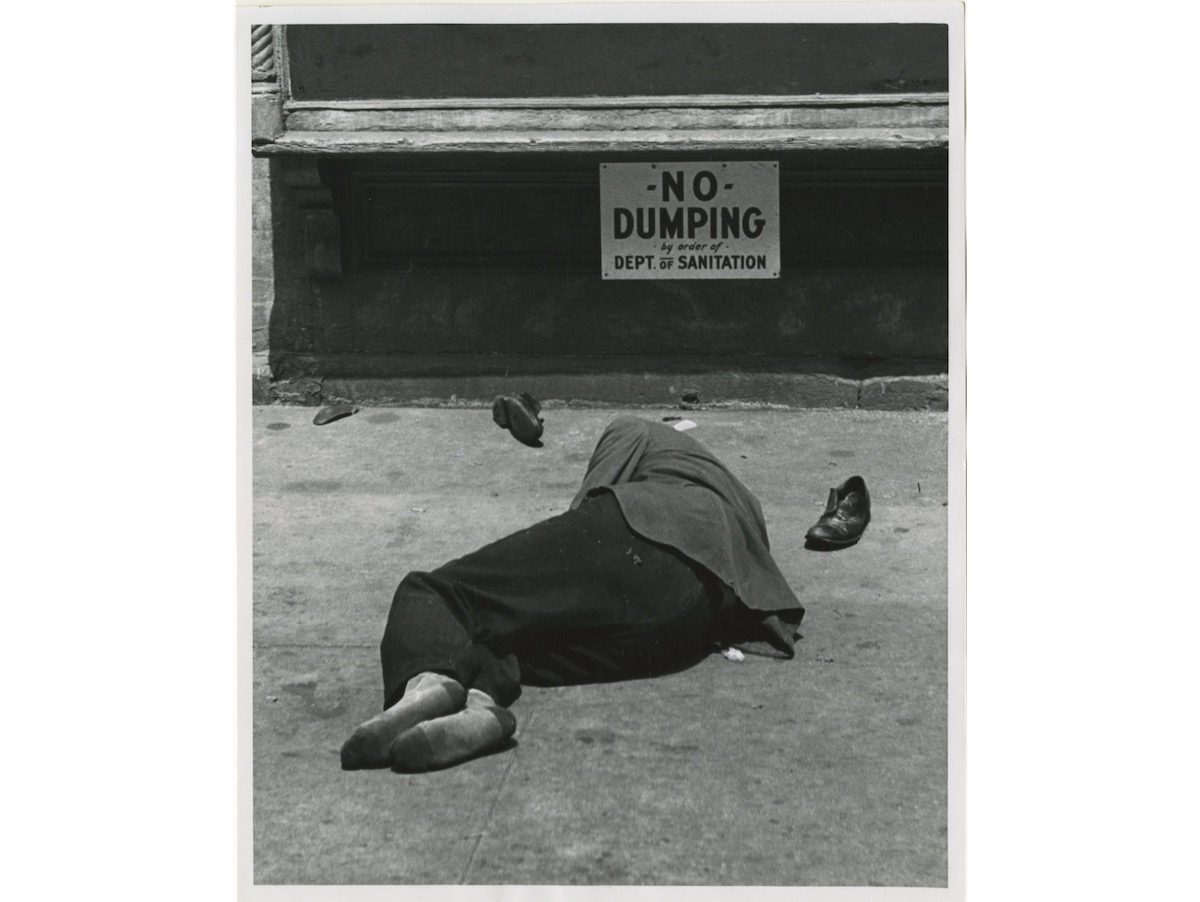
A man sleeps on the ground under a sign that reads NO DUMPING by order of Dept. of Sanitation on the Lower East Side.
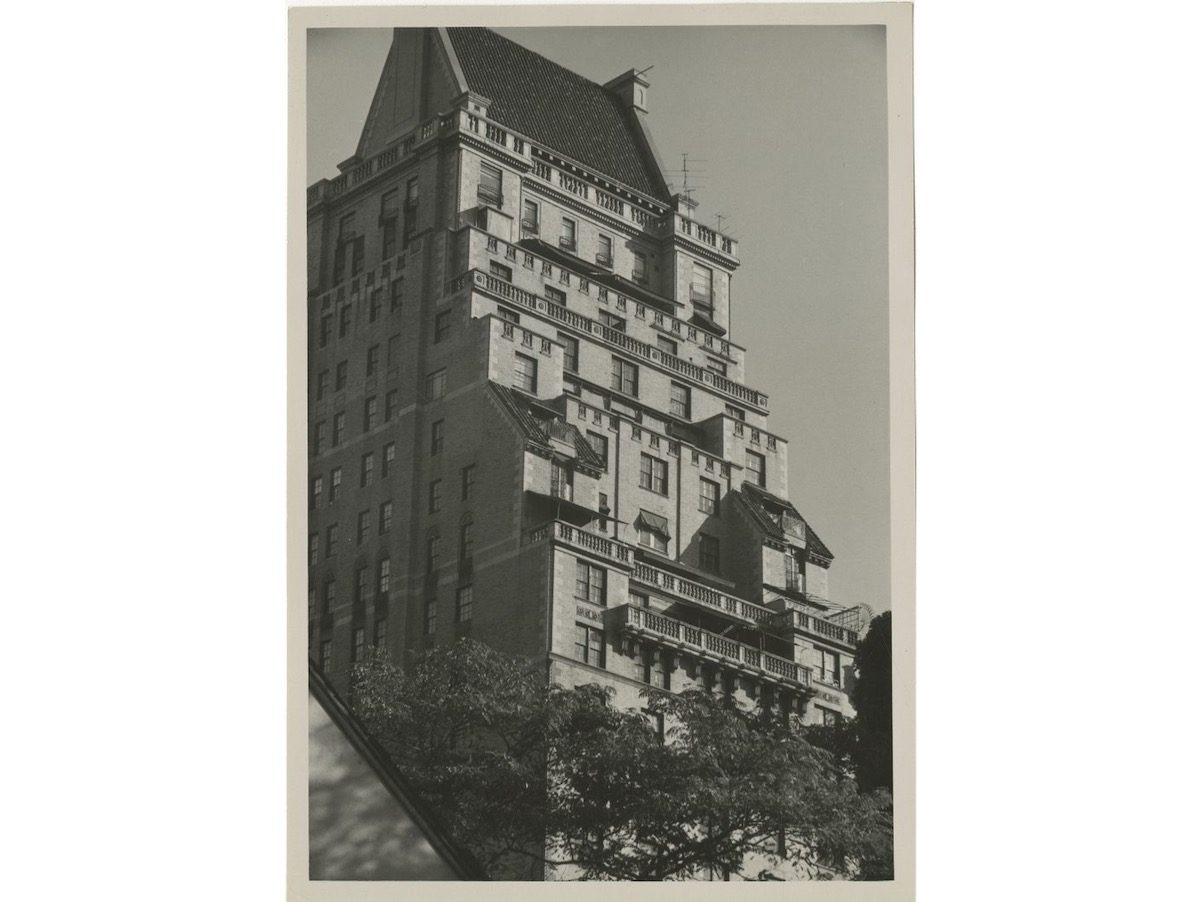
Cluster of PENTHOUSES high up in the sky along 5th Avenue. 1950
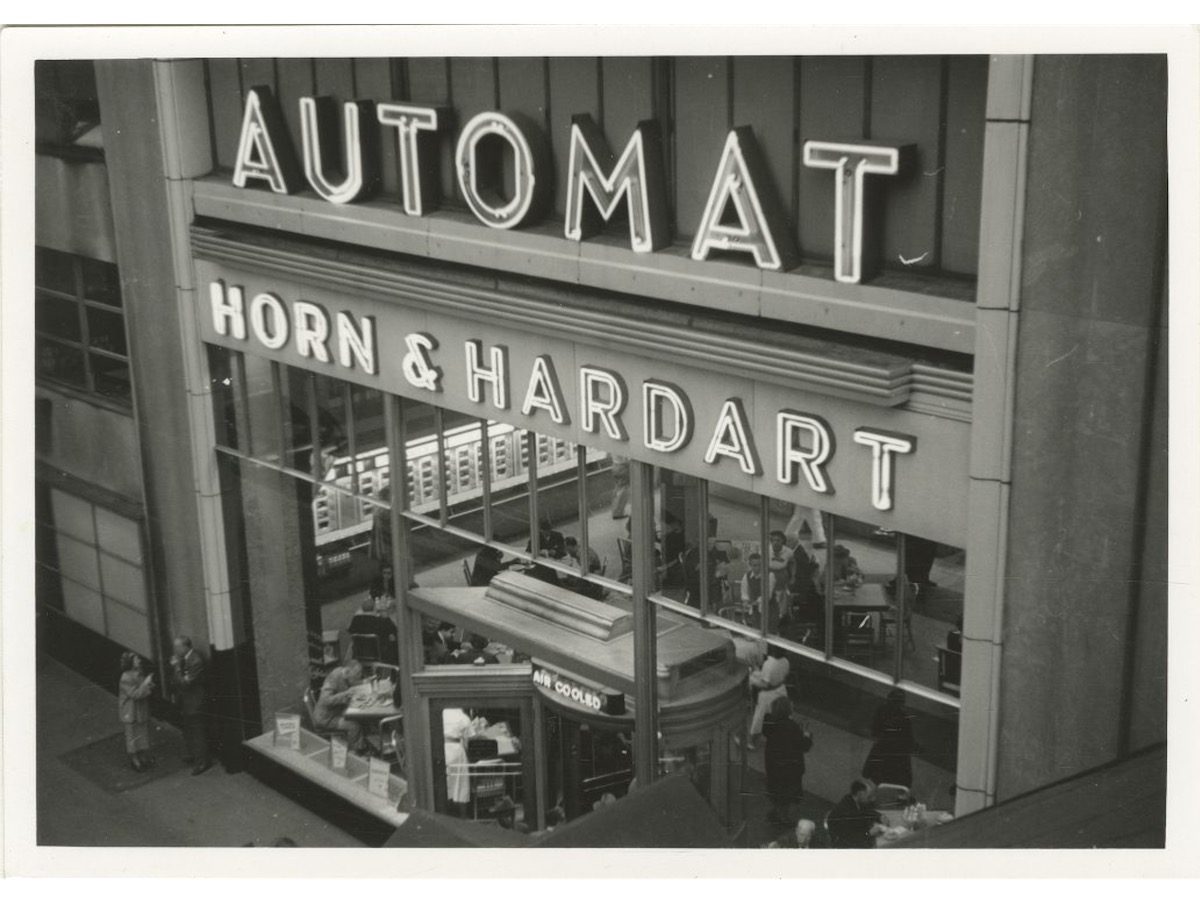
Facade of Automat Horn & Hardart fast food restaurant taken from Third Avenue El platform at 42nd Street and Third Avenue.
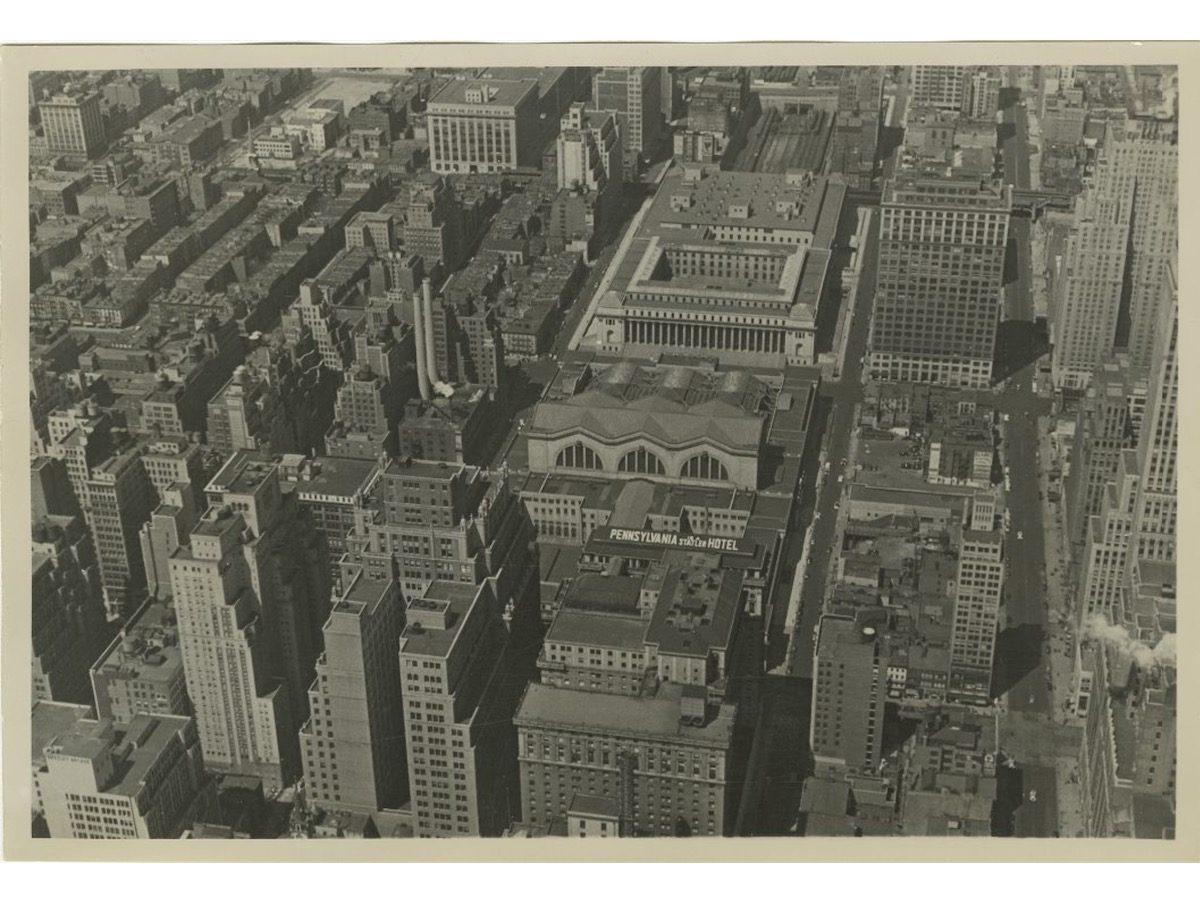
From the 102nd Floor of the Empire State Building.

A sidewalk fortune teller near Chatham Square on the Lower East Side. 1947

Children play with an open fire hydrant in the street on the Lower East Side
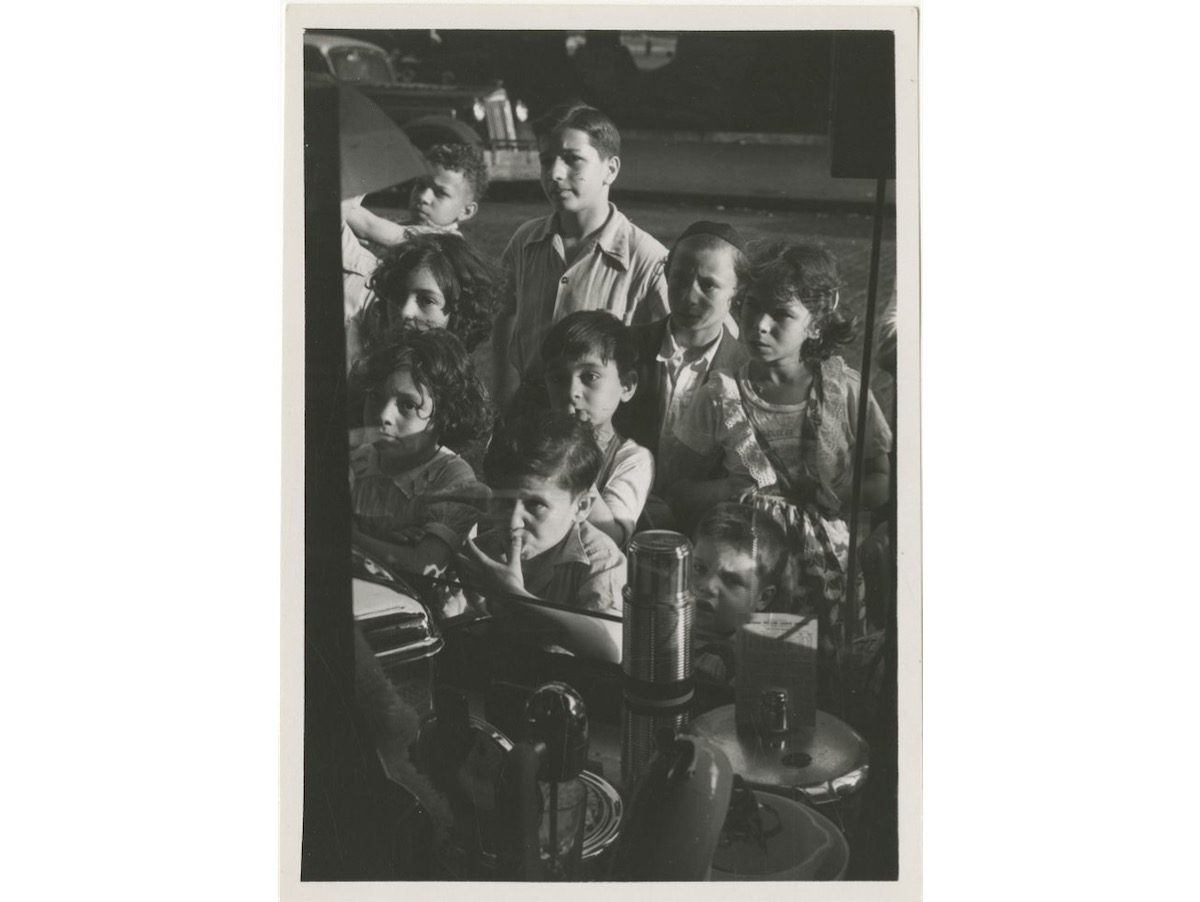
Watching TV on Delancey Street. 1960
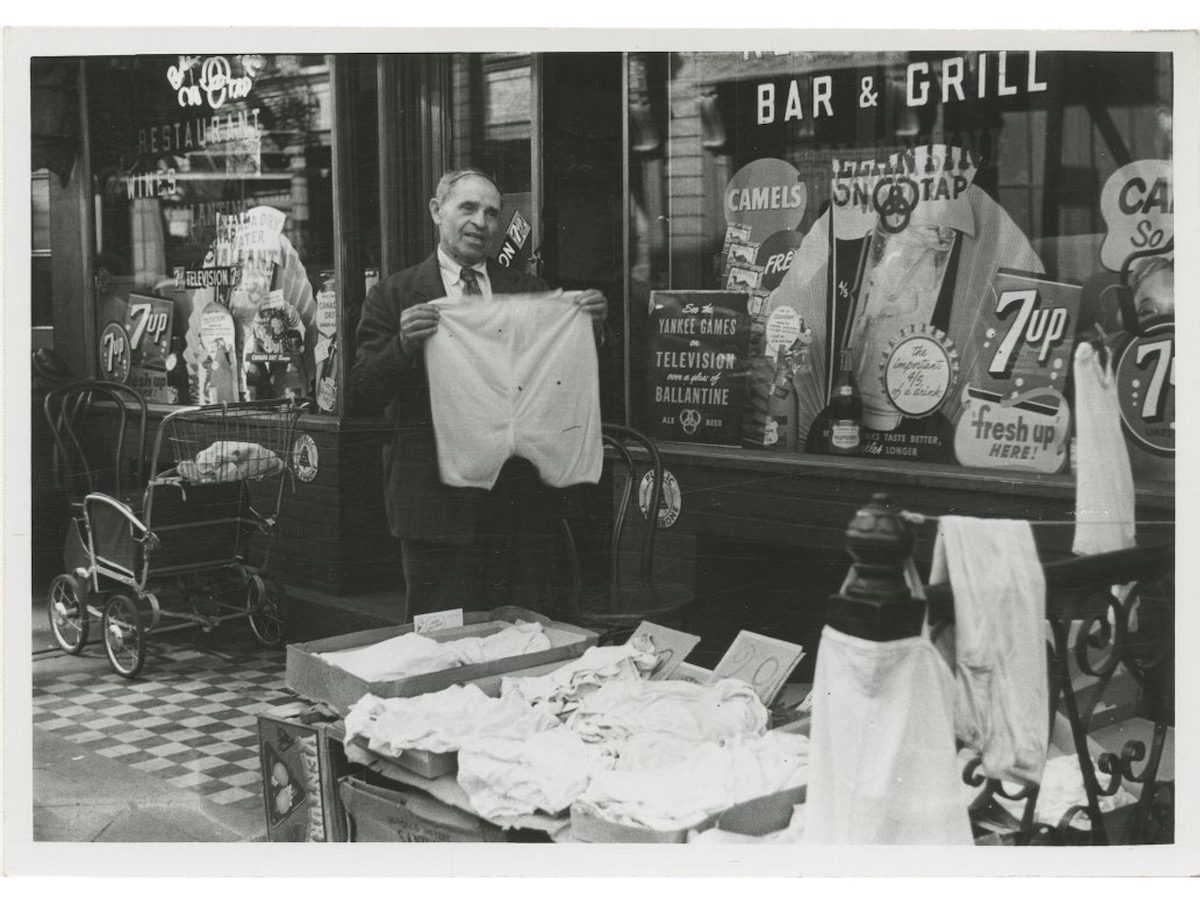
A sidewalk merchant sells clothing in front of a bar and restaurant on the Lower East Side. 1948
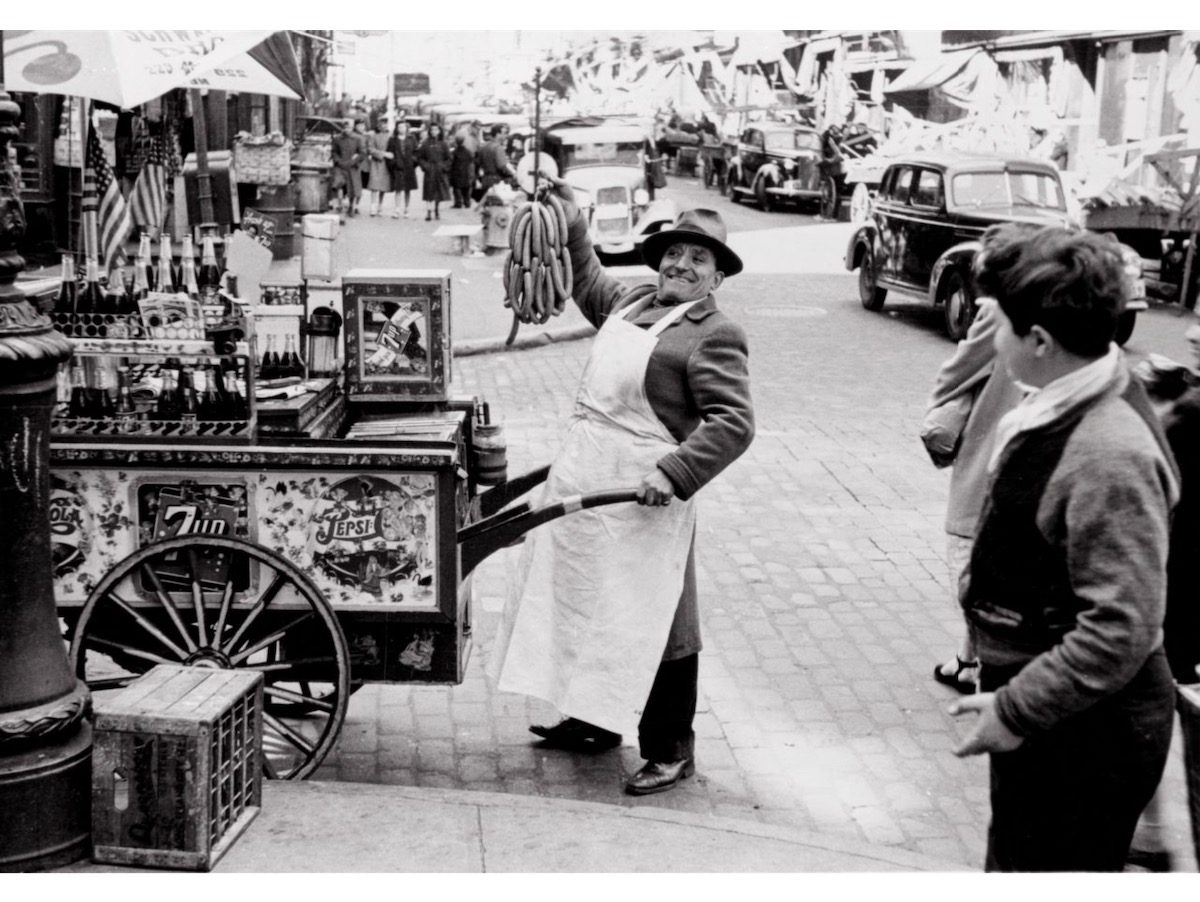
Reverend Frank Compitiello with lunch cart at Grand and Mulberry Streets. 1947

Sidewalk markets in Little Italy.
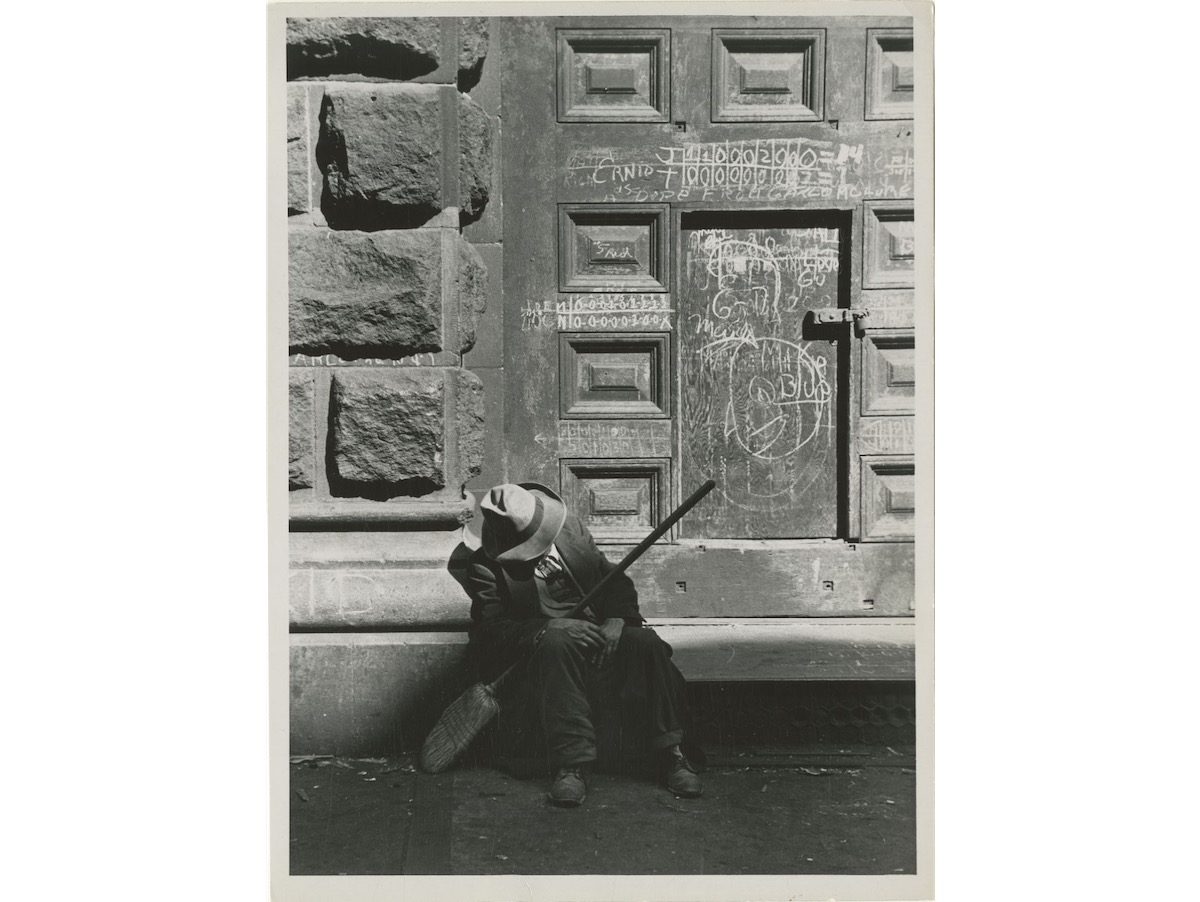
Siesta on Lower East Side.
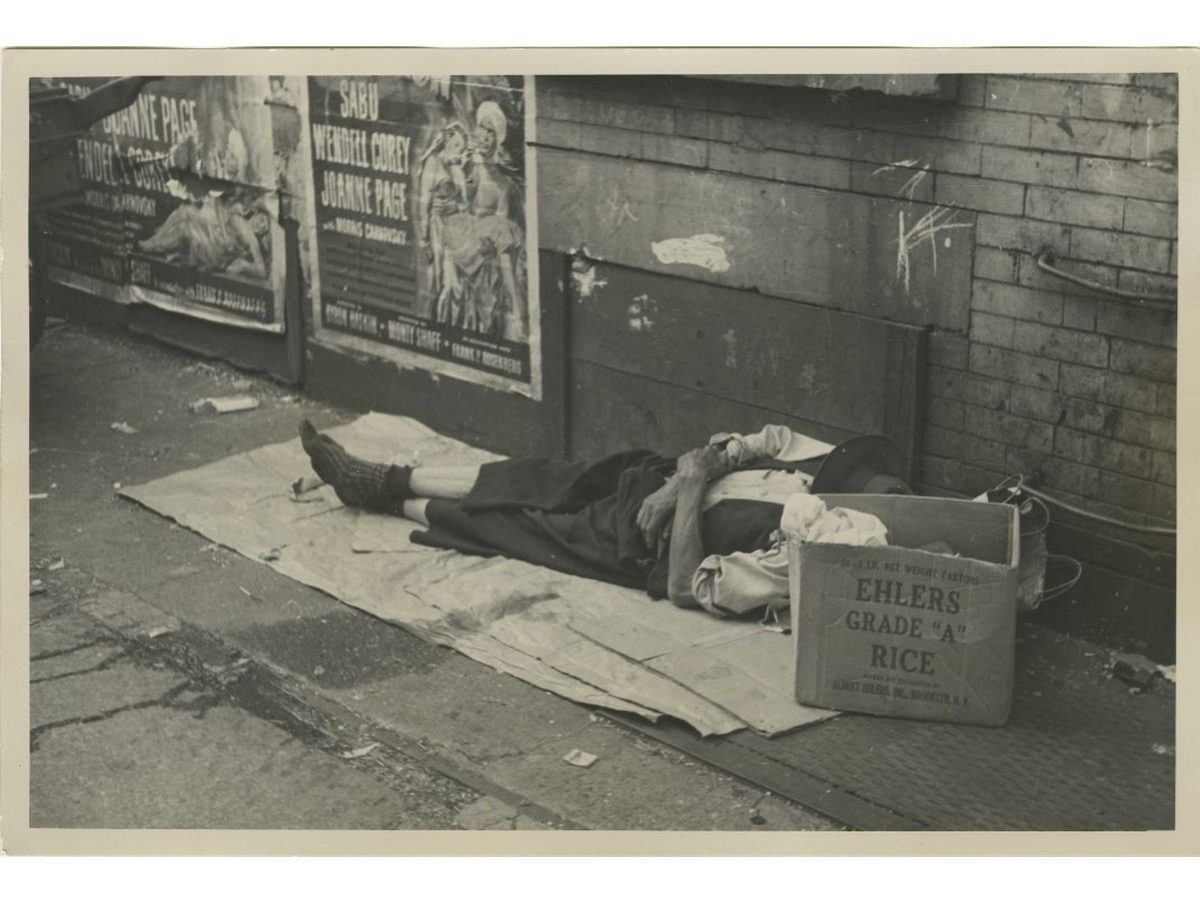
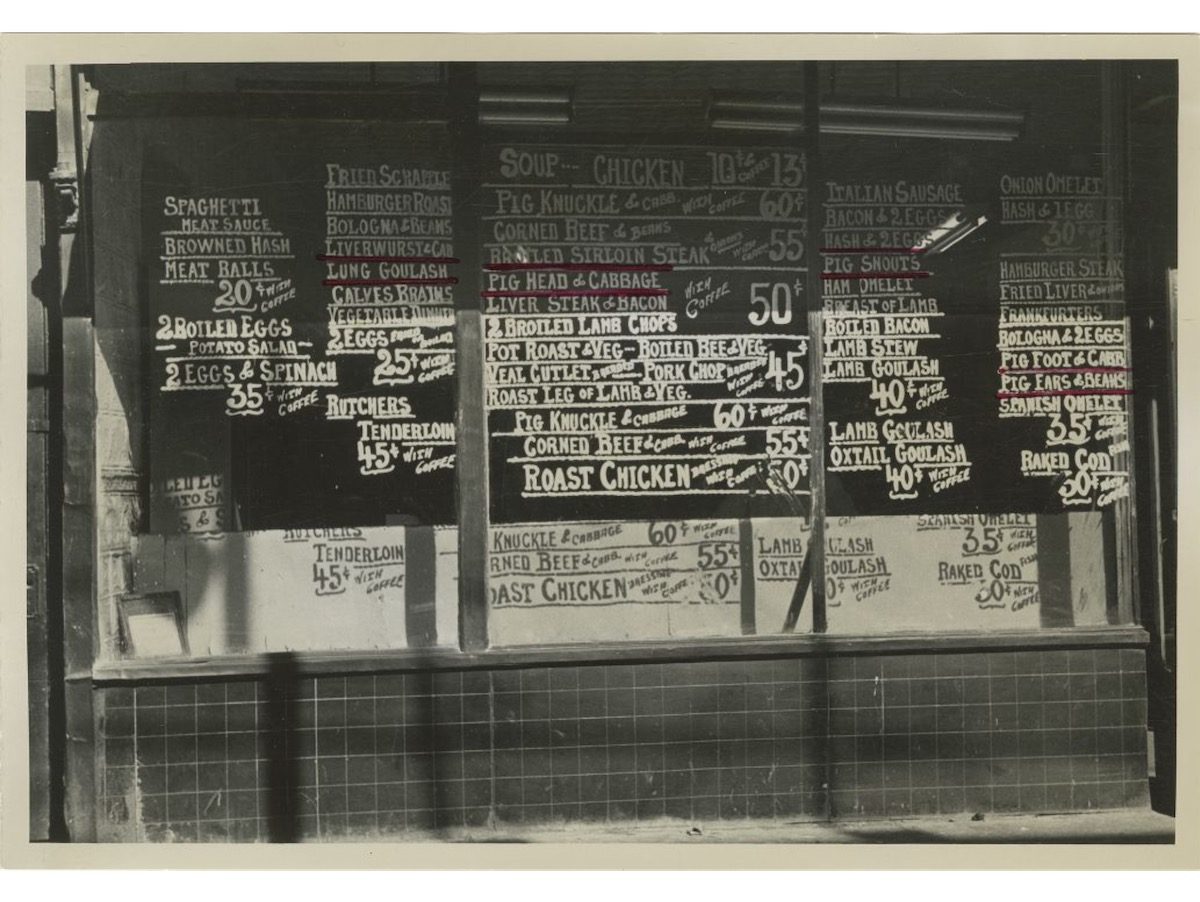
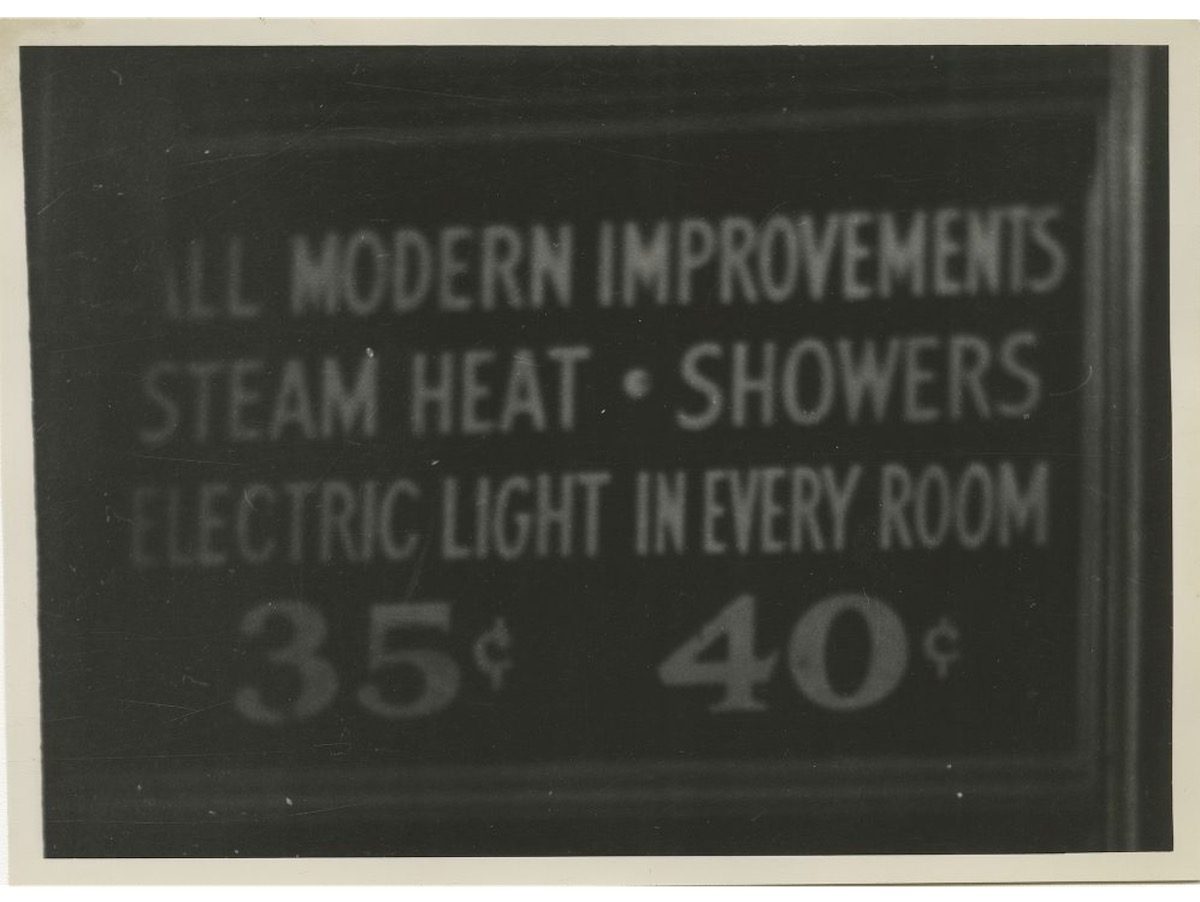
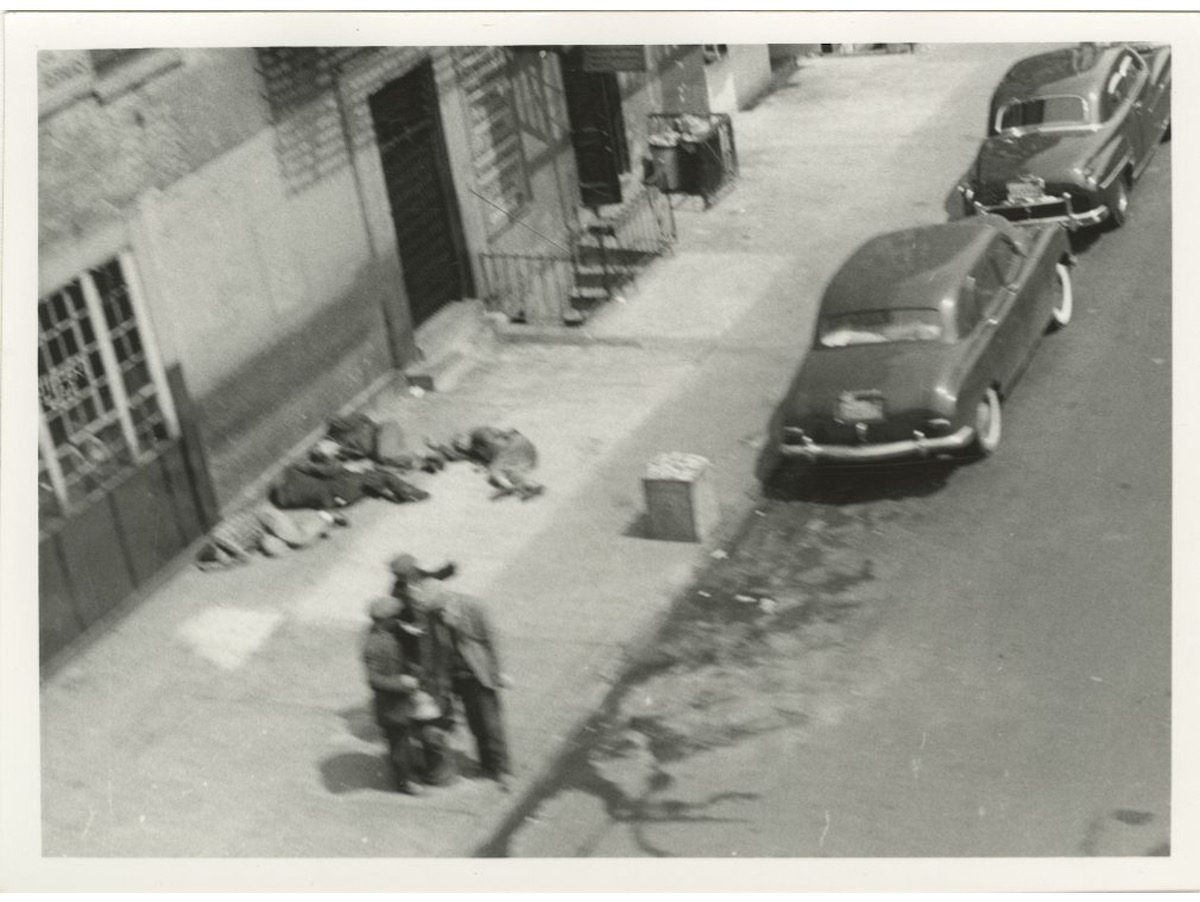
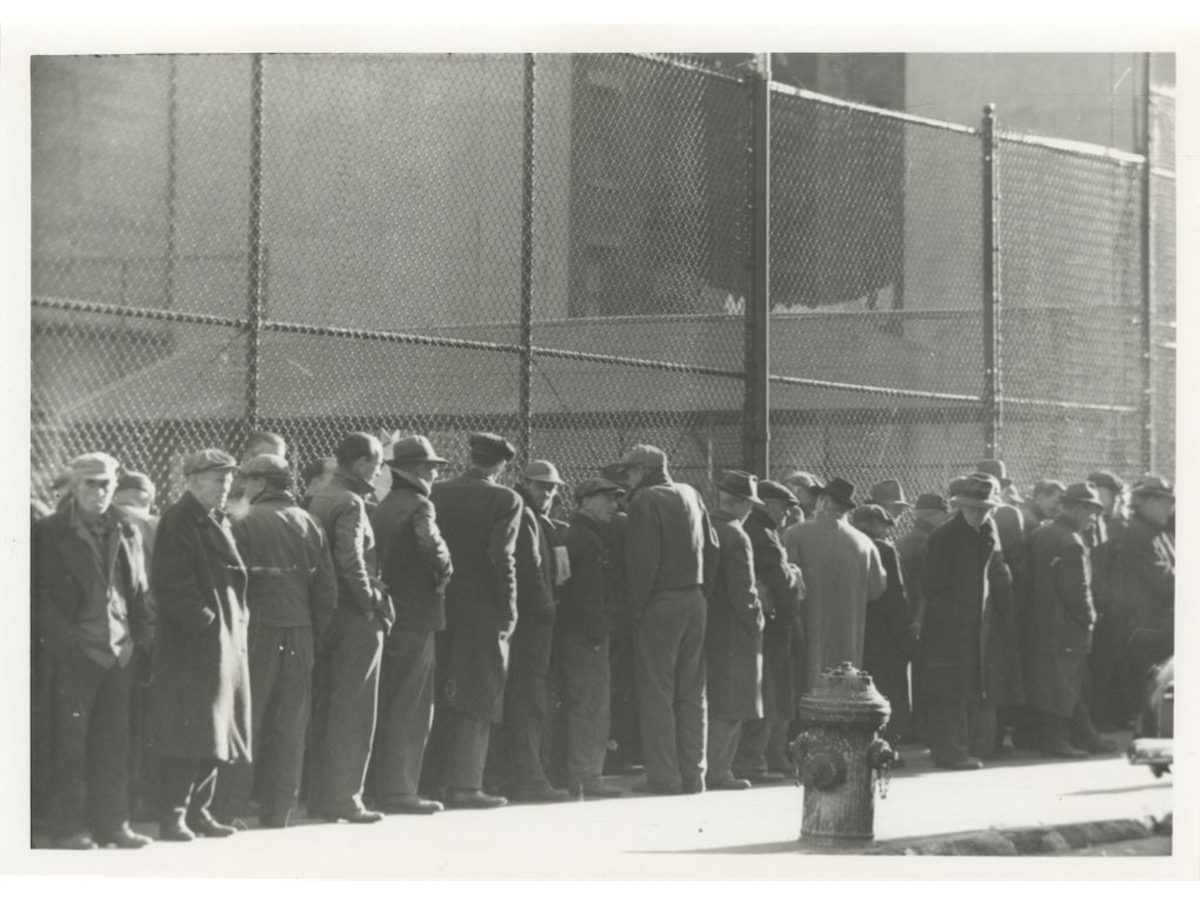
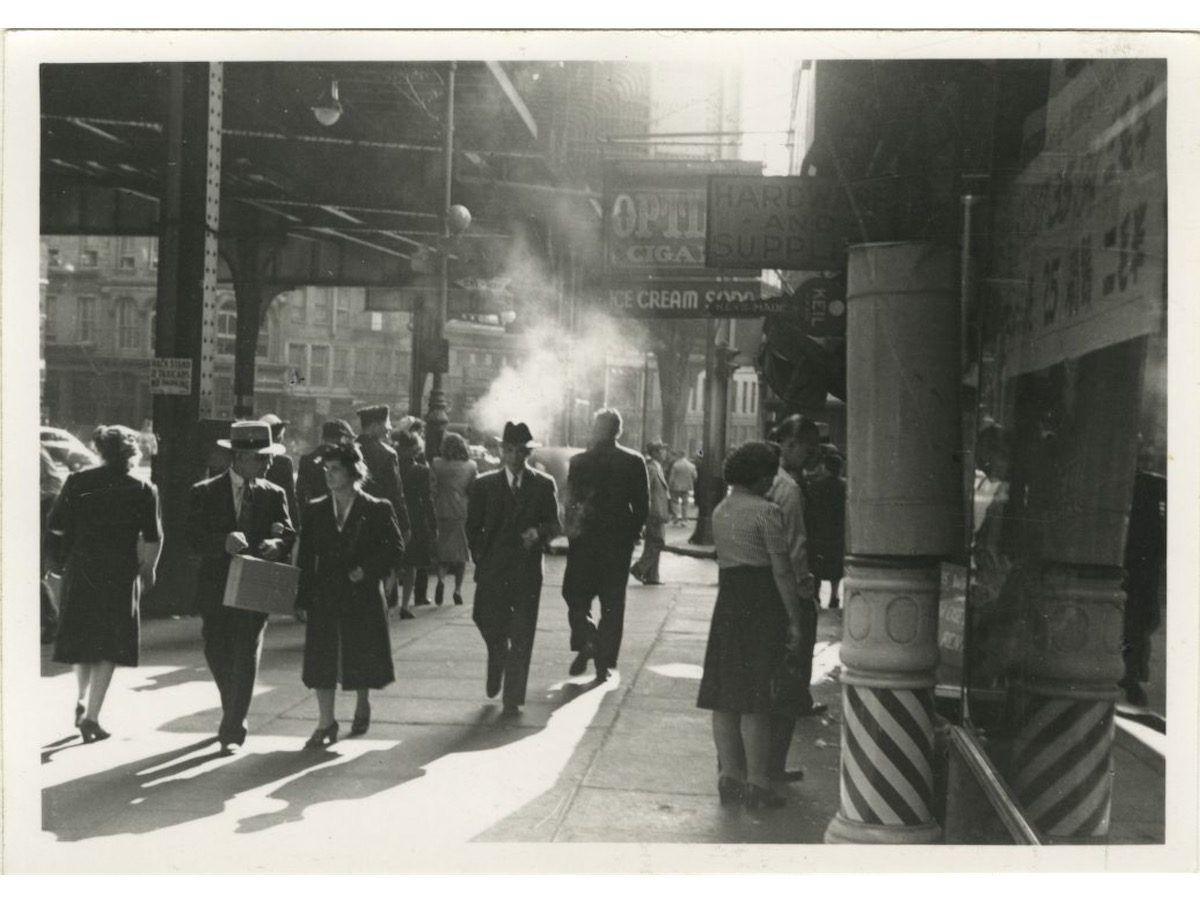
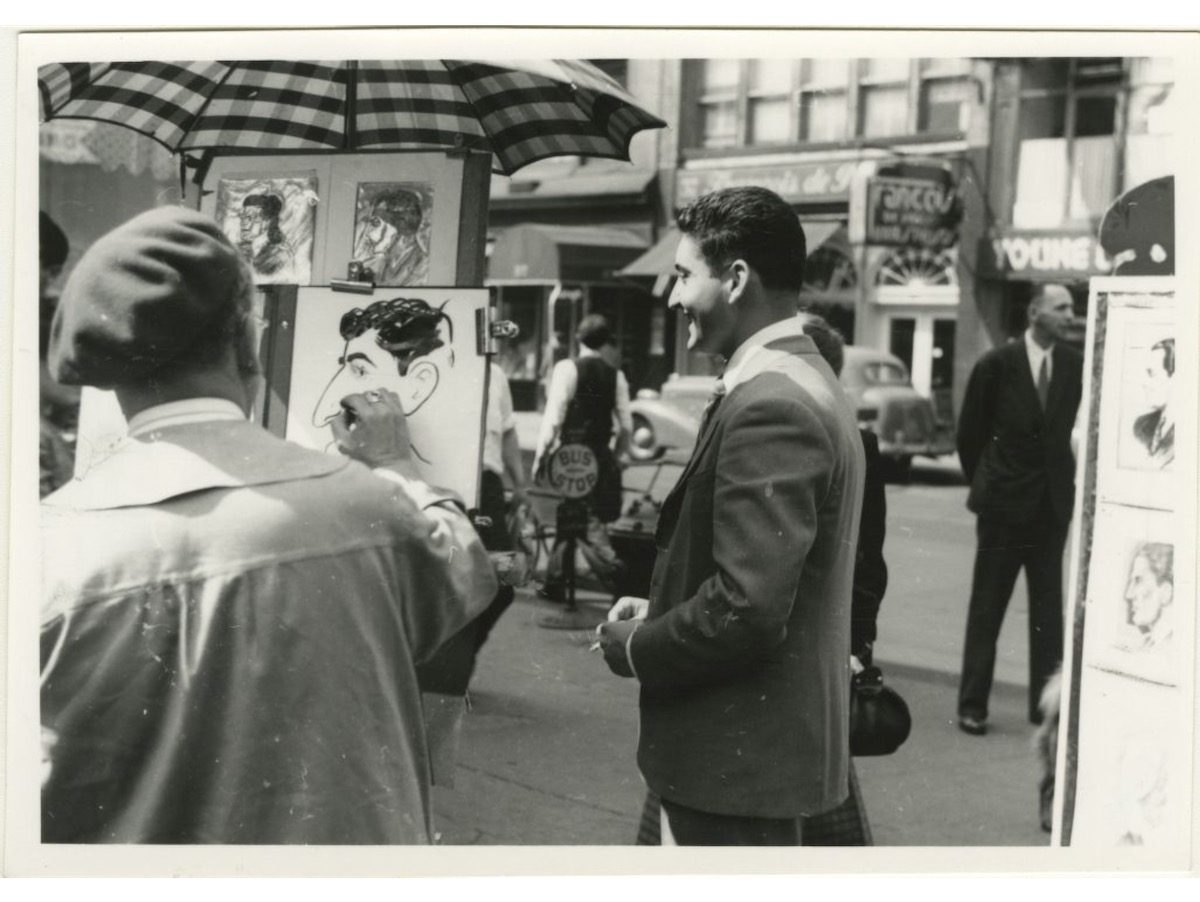
A street artist draws a caricature of a man in Greenwich Village.
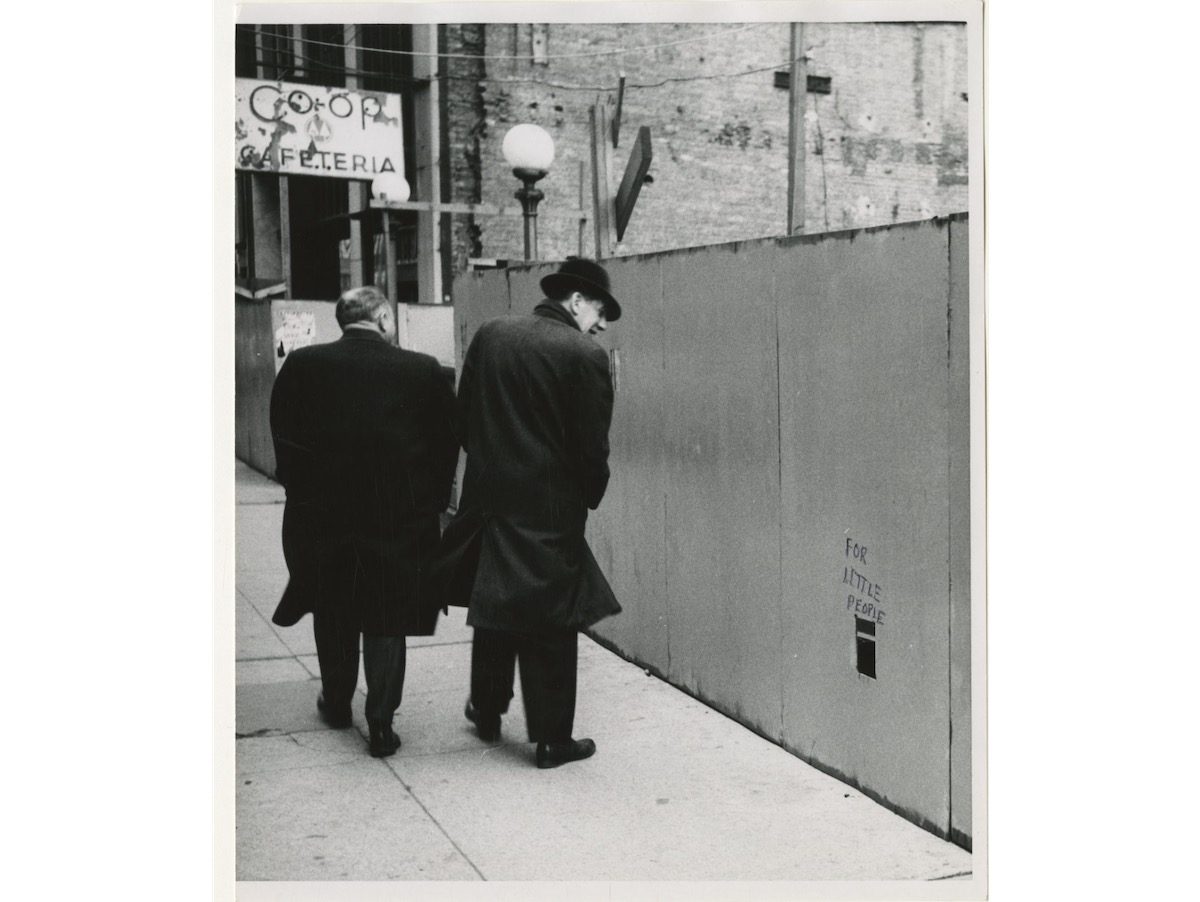
Two men walk by a wooden wall with a rectangular cutout that says FOR LITTLE PEOPLE on the street in New York City. Inscription on verso- For Sidewalk Superintendents.
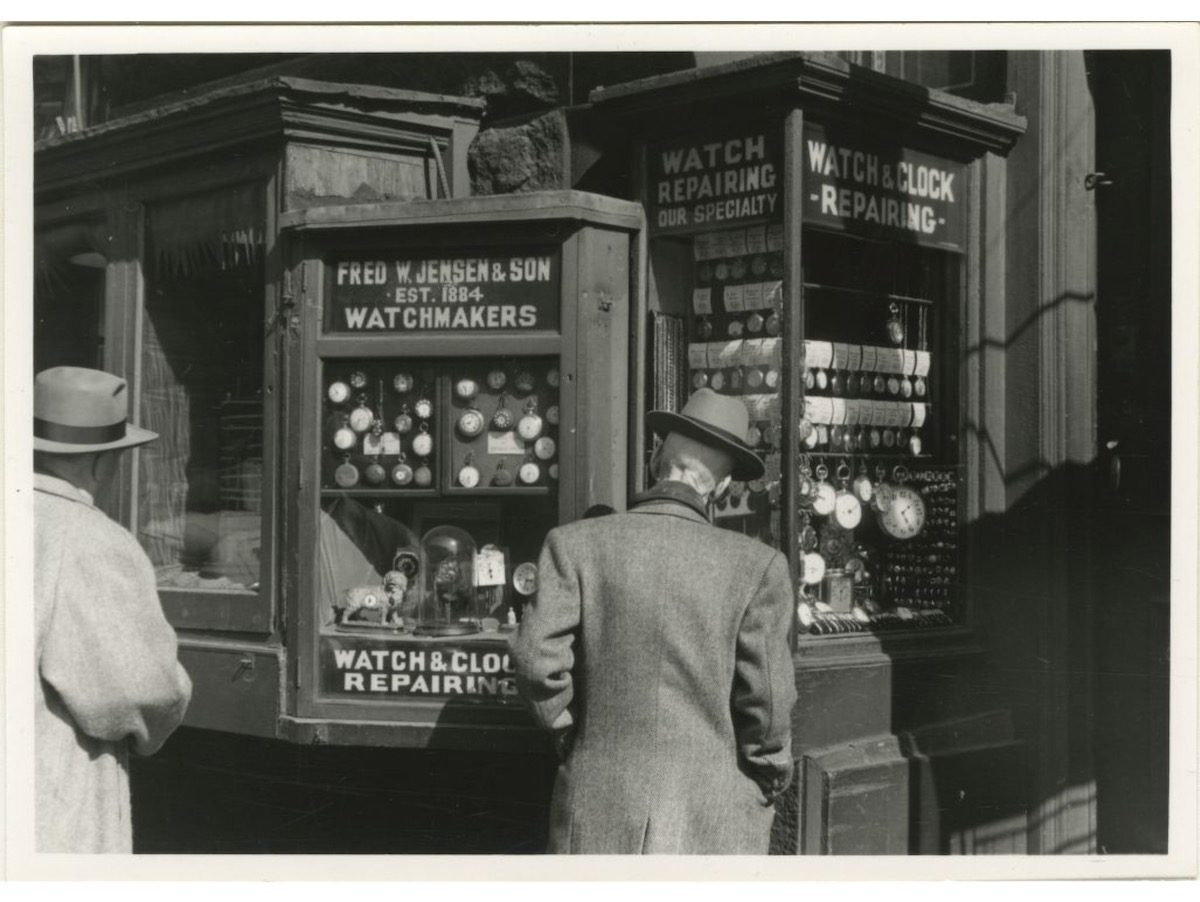
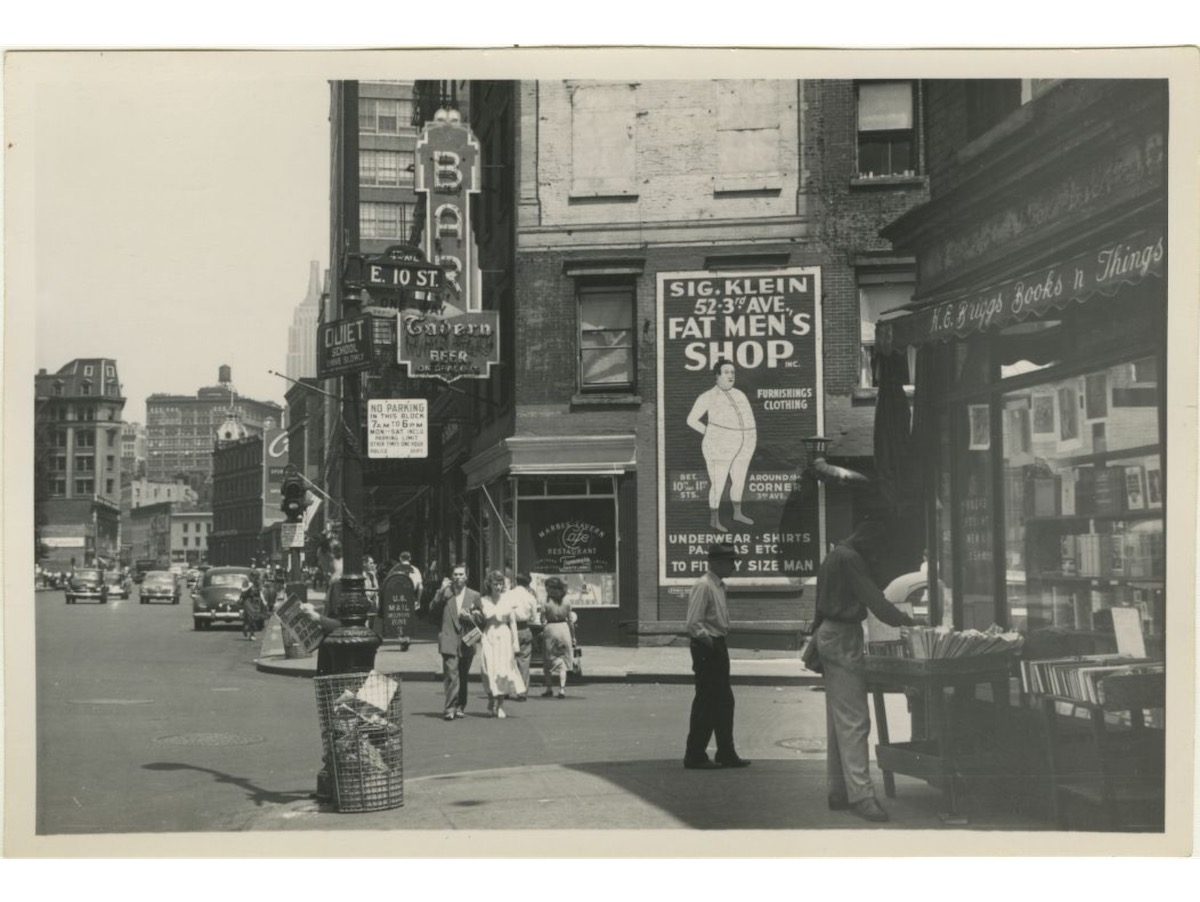
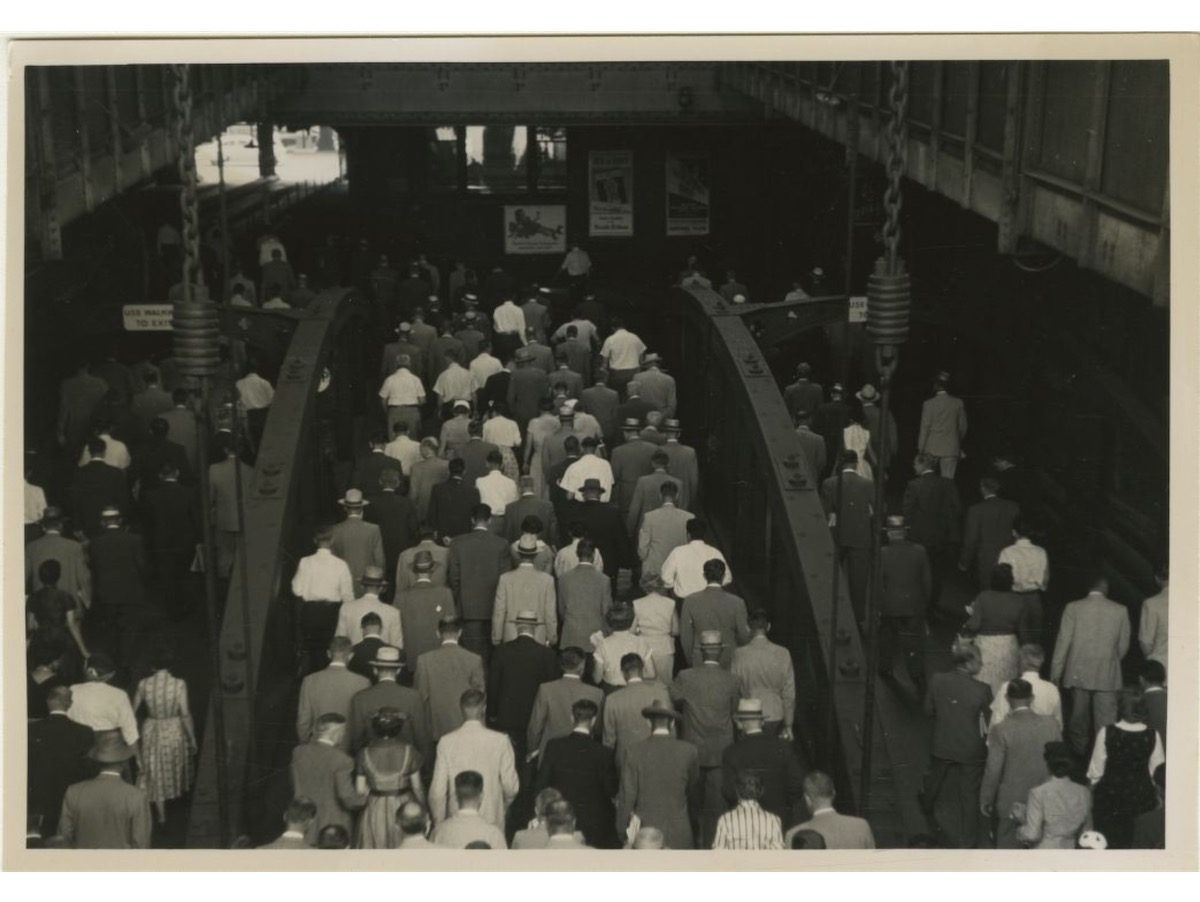
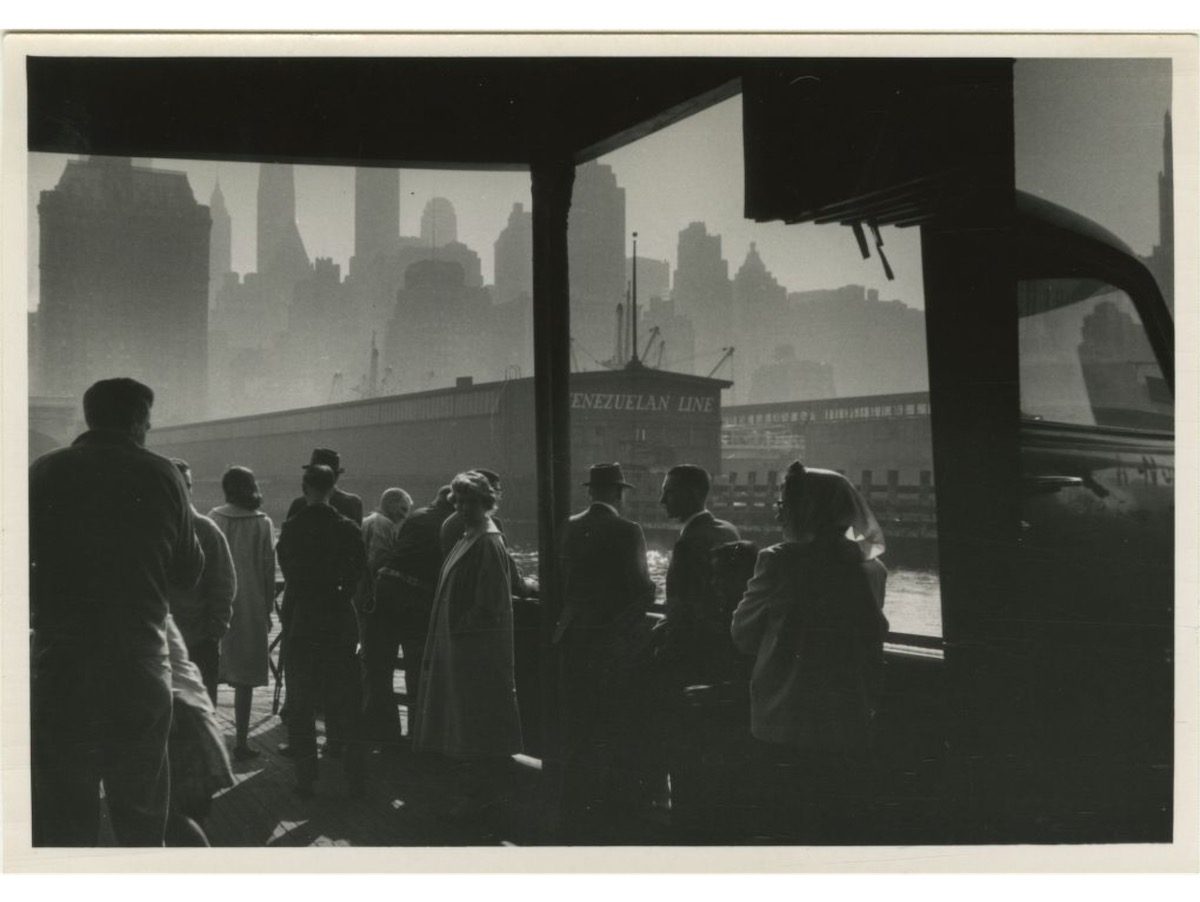
The Liberty Street Ferry approaching dock in Manhattan in the early morning 1950
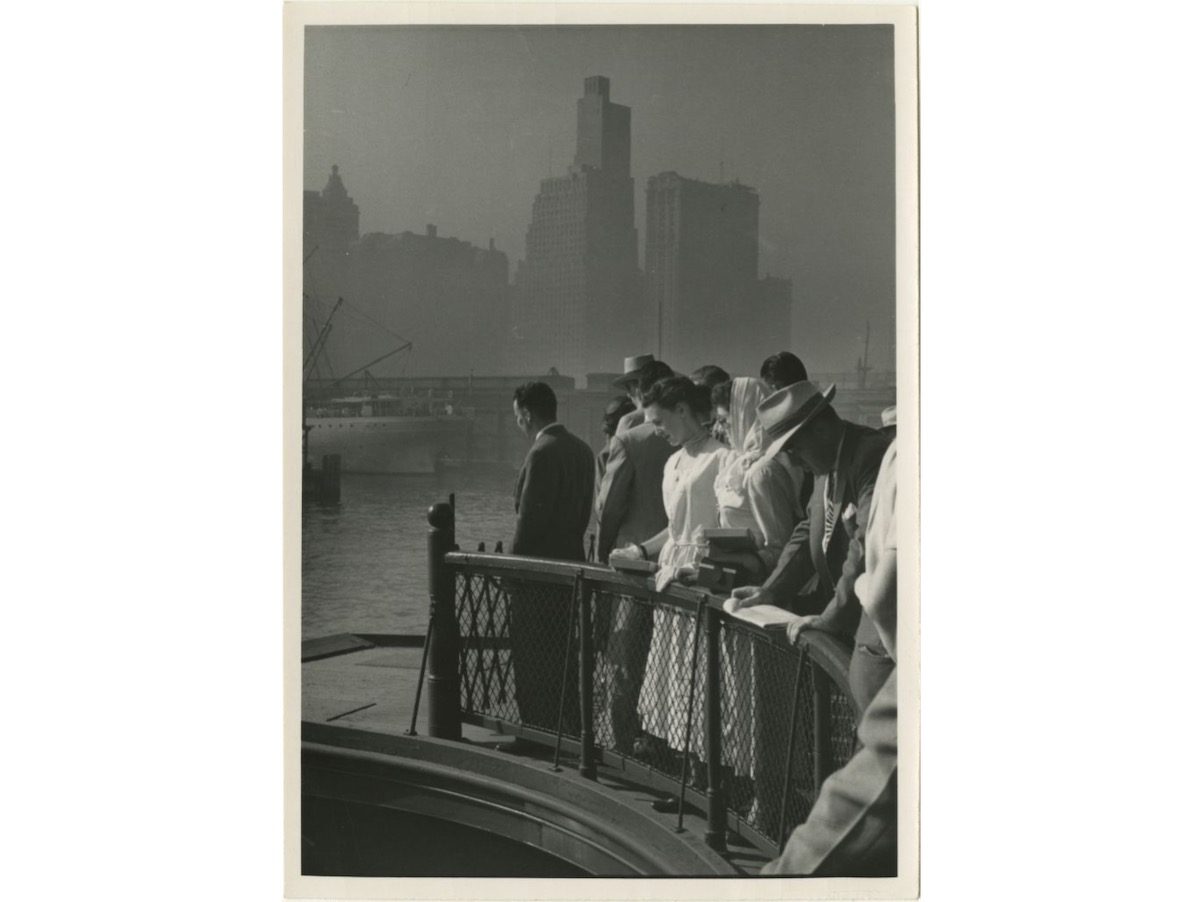
Passengers on the upper deck of a Central Railroad of New Jersey ferry in Jersey City going to Liberty Street in Manhattan 1950
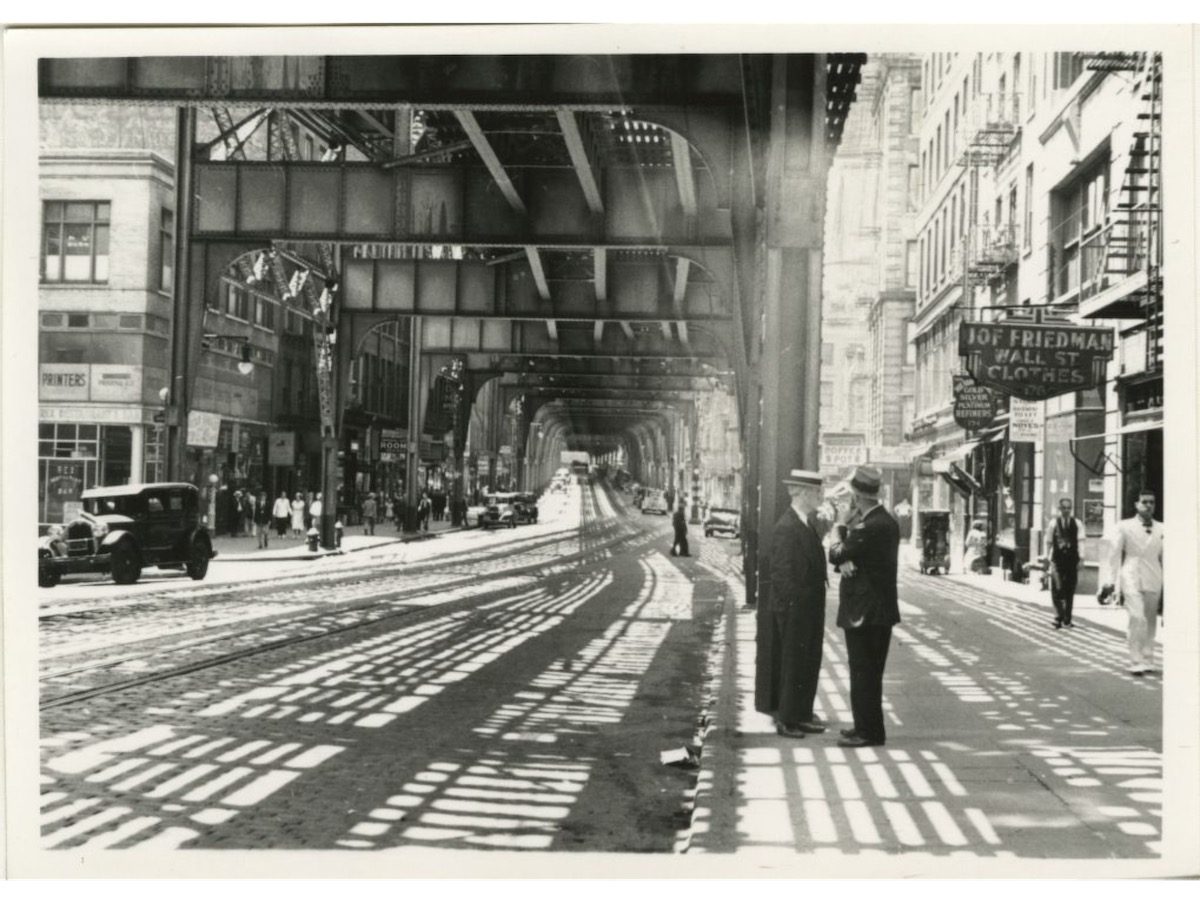
Spur of Third Avenue El along Park Row from Chatham Square to City Hall area. 1944
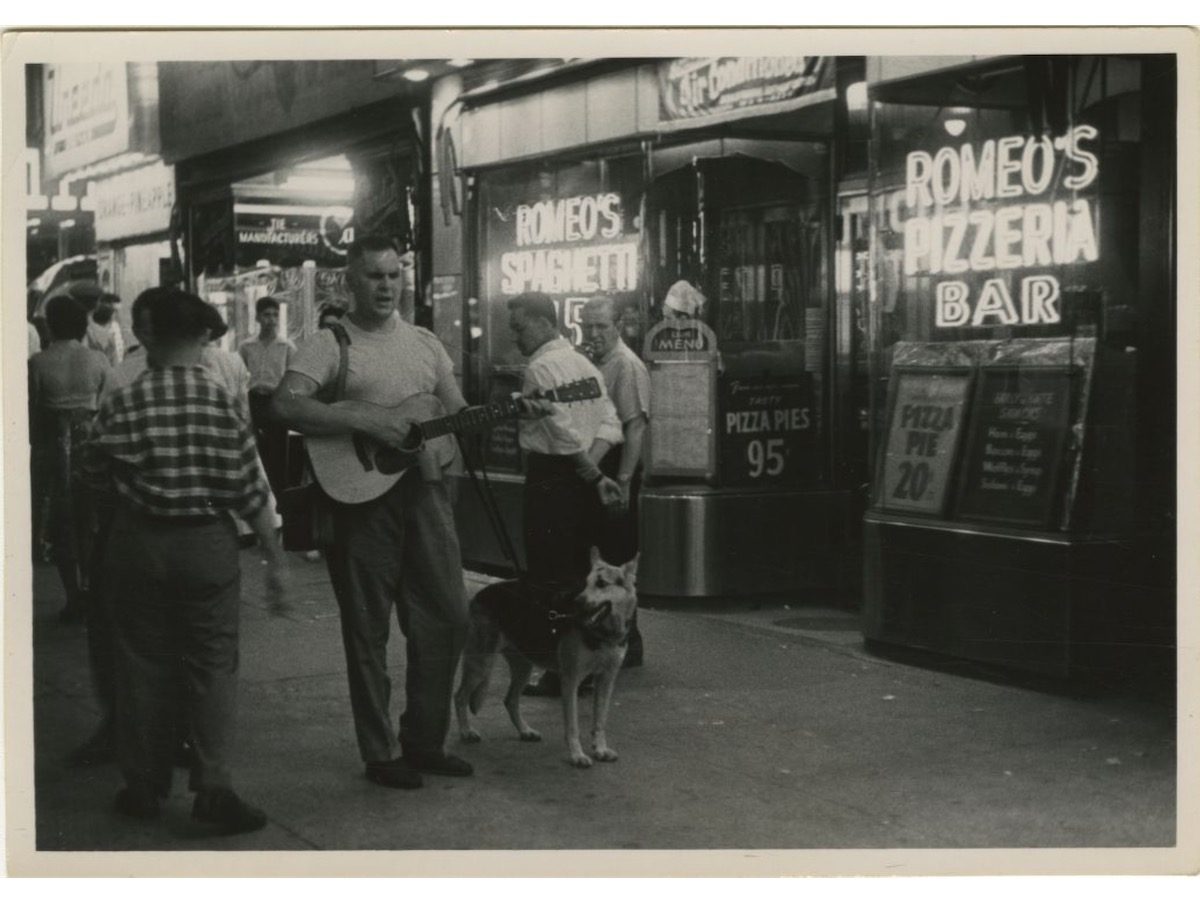
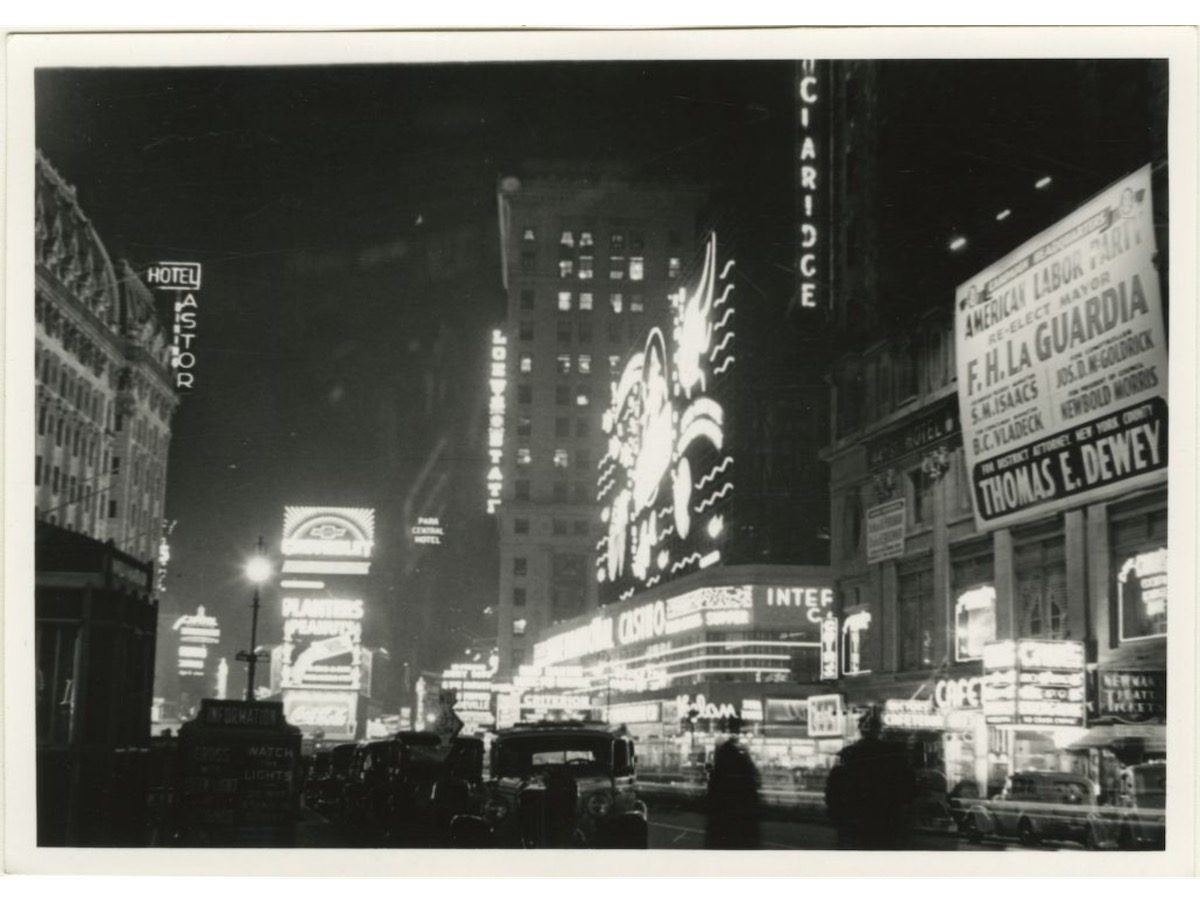
Broadway north of 42nd Street at night in Times Square with Astor Hotel to the left and an American Labor Union Party sign for Mayor F.H. La Guardia’s re-election to the right.
Would you like to support Flashbak?
Please consider making a donation to our site. We don't want to rely on ads to bring you the best of visual culture. You can also support us by signing up to our Mailing List. And you can also follow us on Facebook, Instagram and Twitter. For great art and culture delivered to your door, visit our shop.

